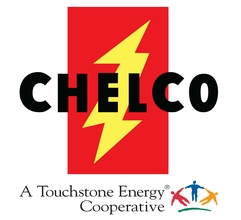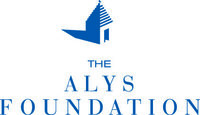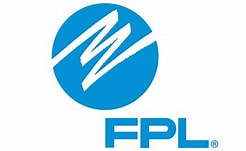Racing Robots: 21st Century Skills at Work

- School:
- Dune Lakes Elementary School
- Subject:
- STEM Education
- Teacher:
- Nancy Rentz
- Students Impacted:
- 22
- Grade:
- 3
- Date:
- October 13, 2017
Investor
Thank you to the following investor for funding this grant.
CHELCO - $988.93
Original Grant Overview
Goal
All students are special and deserve the best education we can provide them. My students need opportunities to help them become engaged, enriched, and enthusiastic learners in the classroom. I will use the addition of robots in my classroom to provide students with challenges to stretch their thinking in math, science, and reading. These robots will help to integrate multiple academic subjects to help students apply the skills they are learning in the individual core subjects.
There are many benefits to using robotics in the class room. Robotics can be a way to help students to realize their passions. Using a strong robotics curriculum like the one from Wonder Workshop can turn students into great leaders. Teams of students working together help build strong communication skills in many areas. Addressing new challenges forces students to learn how to develop listening skills and how to evaluate alternate solutions to problems. Teaching robotics in the classroom helps to build a sense of community that can also spread outside of the classroom into the community around us.
Introducing robotics in my classroom would be an exciting way to allow my students to express their imaginations while learning.
By engaging students in the world of robotics students will be motivated to develop their critical thinking skills. The purpose of this project is to encourage students to learn how to work together to solve real world problems in the areas of math and science. Students will be given a variety of challenges they must read and interpret to develop a computer program for their selected robot all while working with a team of students.
By purchasing the supplies requested below, students will be able to work in teams of 3 or 4 to learn the necessary skills to accomplish the MAFS.K12.MP.1.1 (Make sense of problems and persevere in solving them) and MAFS.K12.MP.3.1 (Construct viable arguments and critique the reasoning of others) goals. As students gain more knowledge, they will progress to more challenging skills. Each day students have 30 minutes to work on activities that will enrich their learning. I would love to be able to provide my students with an entertaining way to provide this enrichment.
What will be done with my students
Our children begin elementary school with high hopes of all they will accomplish. Many of them become discouraged when presented with the challenges in the classroom every day. In today’s fast paced world teaching students how to work together and think critically is important, beginning in elementary school. Traditionally, math and science are two of the weakest subject areas for students. By funding this project our students will have the opportunity to develop their math and science skills in a fun learning environment.
Computers are everywhere and the more students learn about them the more successful they will be in the real-world. It will help set the tone for teaching our students how to become life-long learners.
A total of 22 students in my class will have access to the materials purchased. There is a total of 30 minutes enrichment time allotted each school day. This time will be used for the teacher to instruct students on using the robots in their homeroom class.
a) Students will begin by using the robots in a manual drive mode to get a feel for the capabilities of each of the robots. They will be required to work with their team to create a written document noting the pros and cons of the robot. Students will be given the opportunity to describe ways they would incorporate this new tool in our classroom activities. (2 weeks)
b) After students have some experience with the robots, beginning training sessions would be held on each robot to demonstrate how to begin coding their robot. Students would be shown the basic commands and would be expected to complete simple coding programs using those basic commands. Students would then be required to explain how they used the commands together in their demonstration. (4 weeks)
c) When students have a good understanding of the different robots that are available, they will be able to choose one robot to learn more in-depth skills. This is when students will be given challenges related to the math and science skills currently being studied. Students will need to work cooperatively with their team to complete the challenge. Once completed, they must share their work with the class and explain how they were able to complete the task. (4 weeks)
d) Students will continue this process throughout the remainder of the year with different robots and different challenges related to the current topics in the classroom.
Benefits to my students
Our children begin elementary school with high hopes of all they will accomplish. Many of them become discouraged when presented with the challenges in the classroom every day. In today’s fast paced world teaching students how to work together and think critically is important, beginning in elementary school. Traditionally, math and science are two of the weakest subject areas for students. By funding this project our students will have the opportunity to develop their math and science skills in a fun learning environment.
Computers are everywhere and the more students learn about them the more successful they will be in the real-world. It will help set the tone for teaching our students how to become life-long learners.
What student doesn’t love the opportunity to see their hard work come to life! By providing students with the requested programmable robots in the classroom, they can learn how to work together to make their robots race. Students will use design thinking to create a course and determine how to guide their robot through the course successfully. Students will be given hands-on opportunities to test their logic skills in computing. As a result of using these tools in the classroom, students will practice communicating their thoughts related to math and science. These opportunities will translate into better scores on written expression problems in math, science, and writing. The more students practice talking about these complex skills, the better they will be in answering the open-ended questions in their math and science assessments as well as completing better organized written reports. Data will be tracked on short answer math/science questions and organization scores on written reports.
Math assessment data will be used to determine the success of this project. The expectation is students will improve their reasoning and explanation skills in the area of math. Each quarter STAR math assessments are taken by all students. Students are scored based on the percentile rank of other students on their grade level. The goal is to move students from the 50th percentile ranking into the 75th percentile ranking on the math STAR test.
Budget Narrative
1. Wonder Workshop Dash & Dot Robot Wonder Pack $279.99 Students will use robots and materials to learn basic block coding logic and sequencing skills.
2. K-5 Learn to Code Curriculum Pack $99.99 This curriculum will be used as a guide to helping students understand how to code robots using block coding. Cards start out with basic information and move up to more advanced topics as students are able.
3. Minion MiP Turbo Dave – Fun Balancing Robot Toy $79.99 Features block-based coding platform for educational purposes.
4. Bit by Ozobot, Dual Pack, White & Black $99.99 Robots for students that are not ready for block coding applications. These robots follow a set of drawings to complete their challenges.
5. Ozobot Washable Markers, Color Code Drawing Works with all Ozobots $6.99 These markers are used with the Ozobot robots. Students learn the different patterns that make the robots perform different tasks and draw them with these markers.
6. Ozoeasy Sticker Codes (Starter Pack) for use with Ozobot $12.99 This is a great tool for helping students to begin learning how to make their Ozobots follow their commands.
7. Osmo Genius Kit $79.99 This is another basic coding tool for students not quite ready for the block coding challenges. It provides students with basic logic challenges and advances as students progress.
8. Apple-9.7-inch-iPad-Wi-Fi-tablet-32-GB $329.00 Several of the robots require app to be able to run the coding programs. Additional devices are needed to accommodate more students in the classroom.
Items
| # | Item | Cost |
|---|---|---|
| 1 | Wonder Workshop Dash & Dot Robot Wonder Pack | $279.99 |
| 2 | K-5 Learn to Code Curriculum Pack | $99.99 |
| 3 | Minion MiP Turbo Dave - Fun Balancing Robot | $79.99 |
| 4 | Bit by Ozobot, Dual Pack, White & Black | $99.99 |
| 5 | Ozobot Washable Markers, Color Code Drawing Works with all Ozobots | $6.99 |
| 6 | Ozoeasy Sticker Codes (Starter Pack) for use with Ozobot | $12.99 |
| 7 | Osmo Genius Kit | $79.99 |
| 8 | Apple 9.7 inch iPad WiFi tablet 32 GB | $329.00 |
| Total: | $988.93 |






Share
Please share this page to help in fulfilling this grant.
Email to a Friend